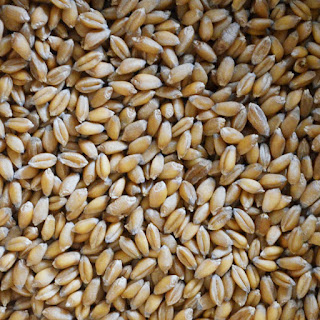1830年、ルイパンタレオン侯爵ジュードノエ(ミランデ近くのリルドノエの荘園領主)は、ウクライナのオデッサから来た新しい種類の小麦を発見。
1880年、この小麦から新しい麦が生まれました(ニックネームは「ノエの小麦」)。この最高の種苗が数世代にわたって生き残り、次に挙げる新しい品種ができました:「Japhet」、「Gros bleu」、「Rouge de Bordeaux」(ボルドー赤古代小麦)。1880年、ヘンリードビルモランはフランスで栽培された地元小麦を棚卸ししました。いわゆる「ボルドー赤古代小麦 」は、主にジェール、ブリー、ボースで栽培されました。殻はボルドーワインのように赤いので、「赤い小麦」と呼ばれるように。収穫量が少ないため(約2トン/ヘクタール)ほぼ幻に近い古い小麦の品種です。背が高いので(高さ1.75 m)風雨によって折れやすい。
ちなみに、ビルモランの会社は一時的に商用ハイブリッド小麦を作りました(「ダッテル」ハイブリッド小麦)。その後残念な事にハイブリッド品種同士の勾配に成功。そうして20世紀の初め頃からフランス中心部では地元小麦の品種はほとんど消滅。産業農業と遺伝的多様性の侵食による被害の始まりです。
・胚芽入り(ビタミンとミネラルが豊富)
・麦胚乳入り(タンパク質と炭水化物が豊富)
・殻入り(食物繊維が豊富)
・ベータカロチンが豊富
第二次世界大戦後まで、フランスとヨーロッパの地域で独自地元産麦が栽培されてた、地域の特定の気候と独特のテロワールに適していた。戦後、空腹人口を養うことが不可欠だった。産業集約農業は「グリーン革命」と誤って呼ばれてた。
In 1830 the Marquis of Louis Pantaleon Judenoye (a manor of Lildonoe near Milande) discovered a new type of wheat from Odessa (Ukraine).
From 1880, selections were made from this wheat (nicknamed “Noah's wheat”). The best seedlings are selected over several generations, thus new wheat varieties appear : "Japhet", "Gros bleu" and "Rouge de Bordeaux". In 1880 Henry de Vilmorin inventoried the local wheats cultivated in France (LES MEILLEURS BLÉS, 1880). It is said that the "Rouge de Bordeaux" is mainly grown in the Gers, Brie and Beauce. It's called 'red wheat' because glumes are red like Bordeaux wine. It is an old variety of wheat which has almost completely disappeared because the yield is low (around 2 tonnes / hectare). Because of its tall size (1.75 m tall), it easily lay down under wind and rain.
Note that “Maison Vilmorin” created the first commercial hybrid wheat (Dattel hybrid wheat). Unfortunately after that, hybrid varieties will succeed one another. From the beginning of the twentieth century, wheat regional varieties almost all disappeared in the center of France. These are the beginnings of the damage caused by industrial agriculture and the erosion of genetic diversity.
This week's bread is wholewheat, homemade stone milled flour (which means 99% of the grain).
・With germ (rich in vitamins and minerals),
・With wheat endosperm (rich in protein and carbohydrates),
・With shell (rich in dietary fiber),
・In addition, Bordeaux red ancient wheat is rich in beta carotene
A bit of history
Right up until after Second World War, every region in France and in Europe grew its own local type of wheat, which suited its particular climate and its unique terroir.
After the war, it was imperative to feed the starving population. The intensive industrial farming was wrongly called “the green revolution”. Industrial laboratories introduced wheat nano genetic alteration.
ここに掲載している文章と情報はステファン・エックオリジナルのものです。通常マナーとして、コピー&ペーストは控えてください。©2020 Stéphane Eck

